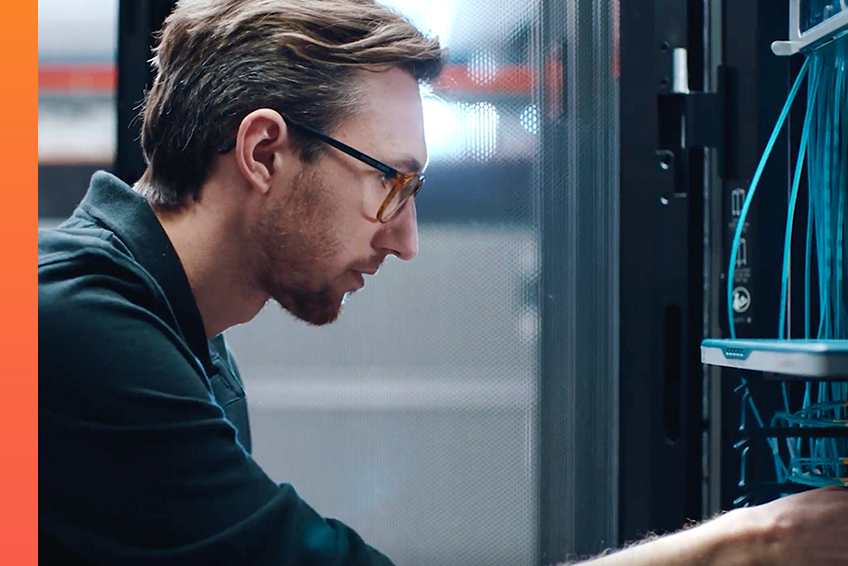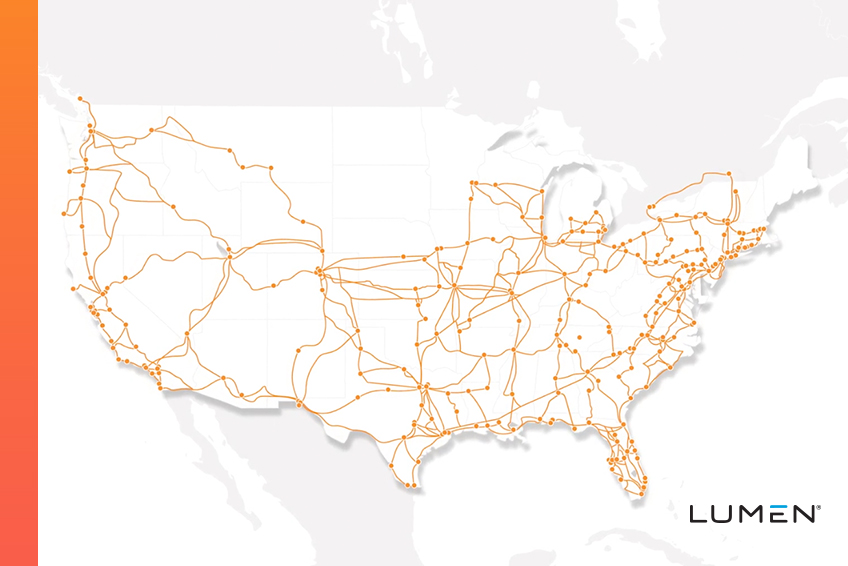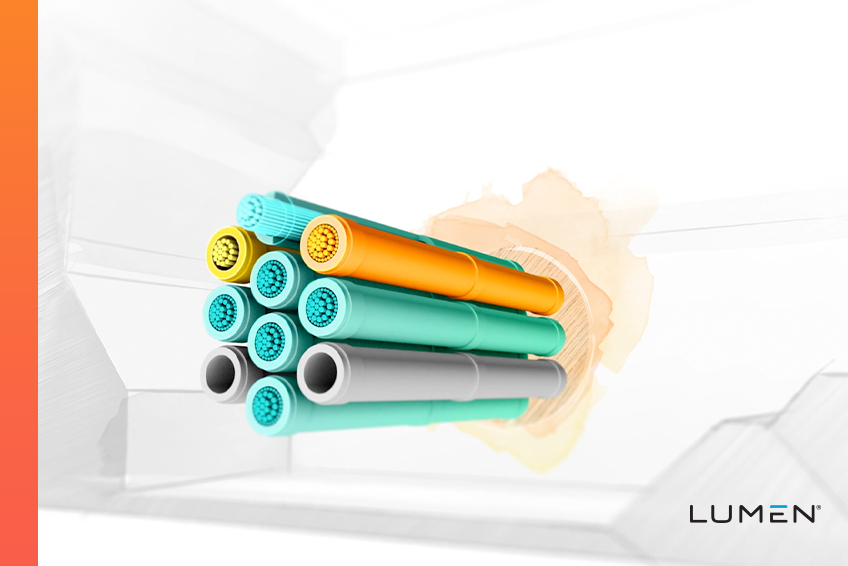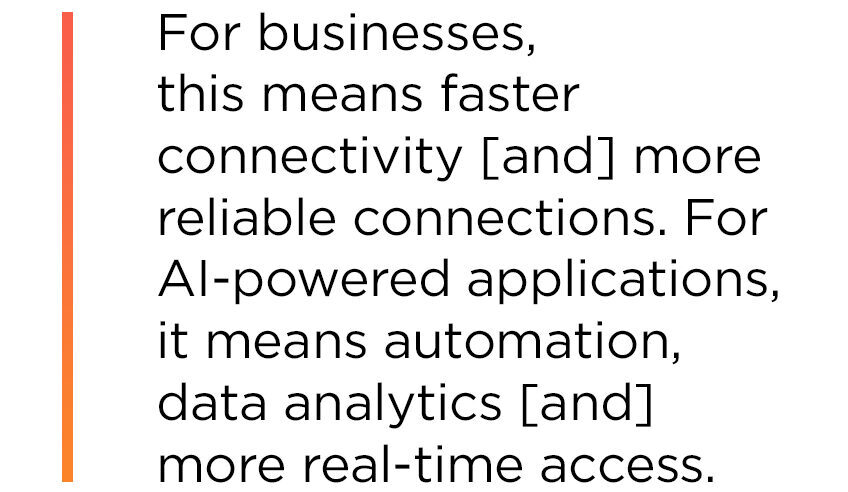From Glass To Global Impact: How Lumen And Corning Are Building The Fiber Behind AI Innovation

Where Fiber Meets The Future
Over several decades, Lumen has built the largest ultra-low-loss fiber optic network in North America, connecting major cities and data centers through its infrastructure. As the demands of generative AI (Gen AI) push the limits of today’s infrastructure, the need for faster, denser and more resilient fiber networks has never been greater.
Enter Corning, the company that invented the first low-loss optical fiber in 1970. Together, Lumen and Corning are engineering a breakthrough: a next-generation optical fiber that’s smaller in diameter but bigger in impact—designed to boost bandwidth, reduce latency and future-proof the backbone of the AI economy.
In this conversation, leaders from both companies share how this collaboration is reshaping the future of connectivity.
Dr. Claudio Mazzali, VP of Global Research at Corning Incorporated: If you think about the planet’s population today—like seven, eight billion people—with one single optical fiber, you can have half of the planet talking on the phone with the other half of the planet. Then when you think about how much science is enabling real applications and actually changing not only people’s lives, but changing the world—yeah, it gives you goosebumps, for sure.
Mike O’Day, Sr. VP and General Manager of Corning Optical Communications: Corning is a 175-year-old glass and ceramic material science company, and so we’ve worked with the wonders of those materials to enable innovations that make the world just a little bit better [of a] place. Back in 1970, Corning invented the first low-loss optical fiber. Now, 55 years later, there hasn’t been another material that has proven to be faster, better or more feasible to scale telecommunications globally than optical fiber.
 Rob Ward, Sr. VP of Network Engineering at Lumen: Lumen is the backbone of the AI economy. Lumen has the largest inner-city, ultra-low-loss fiber network in North America. AI requires massive bandwidth, low latency, high resiliency. Yesterday’s networks just won’t meet the needs of tomorrow’s AI. As Lumen began to see the demands, it was a point that we said, Wow, we’re going to need a bigger boat. We expect to triple over the next three years what we had collectively built over the last 25—that’s massive.
Rob Ward, Sr. VP of Network Engineering at Lumen: Lumen is the backbone of the AI economy. Lumen has the largest inner-city, ultra-low-loss fiber network in North America. AI requires massive bandwidth, low latency, high resiliency. Yesterday’s networks just won’t meet the needs of tomorrow’s AI. As Lumen began to see the demands, it was a point that we said, Wow, we’re going to need a bigger boat. We expect to triple over the next three years what we had collectively built over the last 25—that’s massive.

Mazzali: Lumen came to us with the clear need that we have to connect data centers, we have to connect Gen AI customers and we basically need to put more optical capacity inside the routes that we have. You have a limited amount of space, and you want to put more fiber into that space, so we need to make the fiber even smaller and with more capacity.
O’Day: Think of an optical fiber as something similar to a strand of human hair. There’s so much data that can be sent down that single strand, so the more fibers you can fit in that physical space, the more bandwidth that you can generate.
Mazzali: For this specific collaboration with Lumen, we made a fiber that’s smaller in diameter, and that allows you to put more fiber into the same cable and the same ducts that you’re transmitting.

Ward: For businesses, this means faster connectivity [and] more reliable connections. For AI-powered applications, it means automation, data analytics [and] more real-time access.
So it’s really some of these foundational innovations—that Corning is doing, that Lumen is doing—that enables our customers to innovate faster, to support their customers better and unlock revenue opportunities. None of that can happen without networks that are able to move and protect massive amounts of data instantly.

O’Day: There really aren’t two other companies in the world that could do what Corning and Lumen are doing together right now.
Ward: We’re preparing for not just the next three years or five years, but working to build something long into the future.
Discover how Lumen’s next-gen fiber networks are powering AI innovation at scale.
This content is provided for informational purposes only and may require additional research and substantiation by the end user. In addition, the information is provided “as is” without any warranty or condition of any kind, either express or implied. Use of this information is at the end user’s own risk. Lumen does not warrant that the information will meet the end user’s requirements or that the implementation or usage of this information will result in the desired outcome of the end user. All third-party company and product or service names referenced in this article are for identification purposes only and do not imply endorsement or affiliation with Lumen. This document represents Lumen products and offerings as of the date of issue. Services not available everywhere. Lumen may change or cancel products and services or substitute similar products and services at its sole discretion without notice. ©2025 Lumen Technologies. All Rights Reserved.






